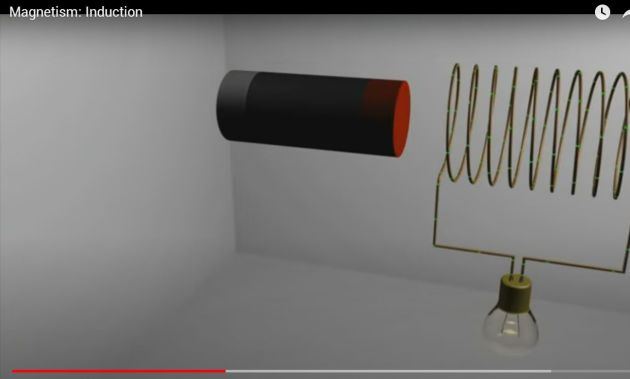Faraday's law
Fondamental :
The Maxwell-Faraday equation is :
\(\vec {rot}\vec E=-\frac {\partial\vec B}{\partial t}\)
Stoke's theorem applied to a thread-like closed circuit (C) :
\(\iint_{(S)} \vec {rot}\vec E.\vec n \;dS=\oint_{(C)} \vec E.d\vec \ell=-\frac{d}{dt}(\iint_{(S)} \vec B.\vec n\; dS)\)
Hence :
\(e=-\frac {d\Phi_{\vec B}}{dt}\)
Where :
\(\Phi_{\vec B}=\iint_{(S)} \vec B.\vec n\; dS\)
is the magnetic flux through the circuit (C).
Attention : Faraday's law
In the Galilean laboratory, the induced electromotive force along a closed still circuit is opposed to the time derivative of the magnetic flux through the circuit :
\(e=-\frac {d\Phi_{\vec B}}{dt}\)
